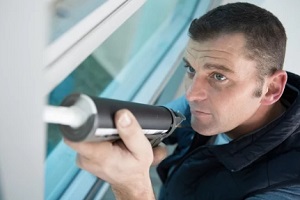 Commercial buildings have a lot to offer the communities that call Delaware home. From important businesses like shopping centers to less visible facilities such as warehouses where products are stored, commercial real estate keeps life moving in our local area.
Commercial buildings have a lot to offer the communities that call Delaware home. From important businesses like shopping centers to less visible facilities such as warehouses where products are stored, commercial real estate keeps life moving in our local area.
Part of taking care of these structures is conducting regular maintenance, which should include caulking or re-caulking, as the need may be. Caulking is a critical part of ensuring that a commercial structure lasts as long as possible, and it is a simple repair that can head off much more serious problems later.
Here is what building owners need to know about the many ways that caulking your Delaware commercial building can save you money—both now and in the future.
Reduce Climate Transfer
The purpose of caulk is to seal gaps and openings that exist as a normal part of a building’s infrastructure. When a door or window is added to a building, for instance, it creates a space between the masonry and the window that should be caulked. When the caulk fails and no longer seals this gap, air can move between the interior and exterior of the building.
In summer, this means that the AC that’s been blowing is filtering out through these small gaps, so the system will have to run more often. In winter, the cool air from outside can force its way in, undercutting the efficiency of the building’s heating.
The HVAC unit will need to work harder to achieve the desired temperatures, resulting in higher utility bills to compensate. Properly caulking these minor areas can save you money immediately on energy costs.
Extend Material Lifespan
Air is not the only infiltrator that can enter through gaps left by worn down or failed caulking. Delaware is susceptible to the freeze-thaw cycle due to the wide range of climate changes that it experiences each year.
When the water from thawing snow enters uncaulked cracks and then freezes as temperatures drop again, it expands, pushing apart bricks or siding. This new, bigger gap can accommodate more moisture, which continues to expand and contract in ever worsening succession.
Water damage in this manner can begin as minor cracks, but left unfixed, it will grow until entire bricks are falling out or areas of the wall have become unsafe due to the risk of collapse. Properly tackling a small caulking job early on prevents the need for substantial repairs later and keeps the building in good condition for as long as possible.
Avoid Remediation
When water infiltrates gaps in a commercial building, it can do more harm than just to the exterior siding or brick. Water that enters interior walls can spread moisture and dampness in areas that building owners cannot see, such as behind framing or inside the wooden structure of the facility.
Over time, this moisture can lead to rot, mildew and dangerous mold. Many of these problems remain entirely unnoticed until they begin to cause significant problems, at which point the fix is an expensive remediation rather than a small day’s work.
Caulking vulnerabilities on both the interior and exterior surfaces of a commercial building prevents expensive problems from growing unnoticed.
Prevent Liability Issues
Caulk can be used in a variety of places, from outside walls to sidewalks and tiled floors. If the caulk wears down, cracks and gaps will continue to grow wider in these spaces over time. Not only is this unsightly and impacts how customers view your business, but it can also present a liability concern.
Imagine that a pedestrian is walking in front of your building or a delivery driver has entered your warehouse office to drop off a package. They trip over a gap in the floor that should have been caulked, and they hit their head on the way down.
In most situations, the business is liable for this injury, including all resultant medical bills and any long-term rehabilitation needed. A simple caulking job can prevent hazards like this from threatening the visitors, customers, stakeholders and employees who spend time in the building every day. Because caulking is not a complex process that interrupts work or production, it can be done as soon as problems arise.
Get Delaware Commercial Caulking Done Right the First Time
While caulking is a simple task that can prevent big problems later, that does not mean it is something that someone can DIY. Experienced professionals can safely remove old caulk without damaging the building and install new caulk lines that correctly seal the gaps.
At Waterproof Caulking & Restoration, we create customized strategies for each commercial building so that they can tackle a caulking problem simply and easily. We do the job right the first time so that your building will last as long as possible with minimal interruption. Contact us to discuss any signs of caulk failure or to schedule an appointment for one of our experts to examine your building.
